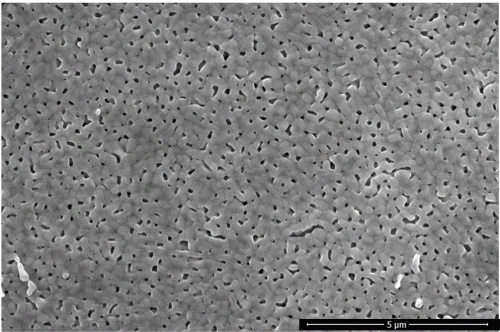
Membrane and membrane process are modern new and efficient separation technology, which is the product of multi-disciplinary crossing. In the past 20 years, membrane separation technology has achieved rapid development in seawater desalination, food, electronics, petrochemical and other fields.Membrane materials are an important part of membrane separation technology. With the expansion and in-depth application of membrane separation technology in different fields, the industry has put forward higher requirements for the structural properties, chemical stability and mechanical properties of membrane materials.The thermally induced phase separation(TIPS) method has become the main method for preparing microporous membranes because of its many controllable parameters and the ability to obtain a variety of microporous structure morphologies.
The thermally induced phase separation method was invented by Castro [1]. Firstly, homogeneous solutions of some thermoplastic, crystalline polymers and specific diluents at high temperatures were formed. The so-called diluent is actually a potential solvent for the polymer. It is a non-solvent at normal temperature but a solvent at high temperature, that is, "high temperature miscibility, low temperature phase separation". Then, when the temperature decreases, the original homogeneous solution undergoes solid-liquid or liquid-liquid phase separation. After removing the diluent, the space it occupies in the system forms micropores.
George Lopatin, Larry Y. Yen [2] then illustrated the basic principle of producing ultra-high molecular weight polyethylene (UHMWPE)microporous membrane by TIPS method.
Subsequently, Pieter B. Pluyter et al. [3] studied the complete pore-forming mechanism of the TIPS method based on previous studies. At the same time, they also pointed out that the boiling point of the solvent in the TIPS method should be lower than 300 ℃, preferably 225-250 ℃. The solvent type should be a hydrocarbon, such as tetralin, decalin, and the most suitable solvent is decalin. Henricus M. Fortuin et al. [4, 5] studied the selection of UHMWPE raw materials in the TIPS method, and pointed out that the average molecular weight is at least 4 × 105 g / mol, and preferably 1 × 106 g / mol. The higher the molecular weight, the better filter material with high strength and high porosity can be produced. However, as the molecular weight increases, the selection of solvents and processing of mixed solutions become very difficult. At the same time, the UHMWPE concentration should be in the range of 2% to 30%, the processing temperature should be above the single-phase uniform solution temperature, and the solvent separation temperature should be above the melting point of the solvent and below the melting point of the matrix resin.
On the basis of experimental research, industrial production of ultra-high microporous materials such as microporous membranes and microporous separators has been successfully achieved worldwide. The ultra-high microporous filter material prepared by this method has a minimum pore diameter of 0.01 μm and an extremely high open rate, even more than 90%. However, this method is limited to the preparation of microporous filter materials with small thickness, such as membranes and sheets.
Reference
1.Castro A J.Method for making microporous products, US Patent 4247498[P], 1981.
2.George Lopatin. Microporous membranes of ultrahigh molecular weight polyethylene, US Patent 4778601[P], 1988.
3.Pieter B. Pluyter, et. al. Process of making microporous films of UHMWPE, US patent, 5248461[P], 1993
4. Pieter B. Pluyter, et. al. Process for making microporous films of UHMWPE US Patent 5643511[P], 1997.
5.Henricus M.Fortuin, et. al. Microporous film and process for the production thereof. US Patent 5370889[P], 1994.